25 Timeless American Breads Every Baker Should Master
Classic American breads represent a delightful culinary journey through cultural traditions and regional flavors.
Bakers across the nation have perfected unique techniques that transform simple ingredients into comforting masterpieces.
These bread varieties tell stories of immigrant experiences, local agricultural practices, and family recipes passed down through generations.
Each loaf carries distinctive textures, aromas, and memories that connect communities and celebrate gastronomic heritage.
Regional influences shape the characteristics of these beloved breads, reflecting local tastes and agricultural strengths.
The diversity of classic American breads showcases the country's rich multicultural fabric and innovative baking spirit.
Passionate food enthusiasts appreciate the nuanced craftsmanship behind these beloved staples that grace dining tables nationwide.
We invite you to dive into our comprehensive list of 25 classic American breads that will tantalize your taste buds:
Classic American Breads to Bake or Buy
American bakers create a delicious variety of breads, pillowy rolls, crusty loaves, and sweet cornbread. Each recipe speaks to local flavors and time-tested tradition.
California Sourdough Bread
Sourdough stands as a rustic, tangy bread with wild yeast and bacteria naturally fermenting its distinctive flavor profile.
San Francisco gold miners popularized this ancient bread during the 1849 California gold rush, when French bakers like the Boudin family introduced their signature loaves.
Egyptians first documented sourdough bread production thousands of years ago, making it one of humanity's oldest fermented foods.
Wild microorganisms create its complex taste through slow fermentation, developing deep, sour notes that set it apart from commercial breads.
French and California bakers perfected sourdough techniques, transforming simple ingredients into crusty, flavorful loaves.
Miners treasured these breads for their hearty texture and long-lasting qualities during challenging frontier conditions.
Each loaf carries unique microbial characteristics depending on its environment and starter culture.
Sourdough remains a beloved traditional bread with rich cultural and culinary significance across multiple continents.
New York City Bagels
Bagels are round bread rolls with a signature hole and distinctive texture that originated from Jewish Eastern European immigrants in New York City.
New Yorkers boast about their bagels' unique quality, claiming the city's soft water with low calcium and magnesium levels creates perfect dough.
Jewish immigrants introduced these hand-shaped rolls, which require twelve-hour resting periods convenient during Sabbath when work was prohibited.
Bakers boil the dough before baking, creating a dark, shiny, and crunchy exterior that snaps when bitten.
Malty flavors and dense texture distinguish these small bread rolls from other breakfast options.
Traditional preparation involves careful shaping and patient resting of the dough.
Bagels quickly became a beloved breakfast staple across urban neighborhoods.
Commercial production now makes these iconic bread rolls widely available throughout the United States.
Cuban Bread
Cuban bread embodies Florida's bakery mastery with its distinctive rectangular shape, crisp exterior, and cloud-like interior packed with delicate air pockets.
Originating in either Tampa or Miami, this iconic white bread serves as the foundation for the legendary Cuban sandwich.
Bakers carefully craft each loaf to achieve a perfectly thin, hard crust that contrasts with its supremely soft inner texture.
Traditional preparation involves creating multiple air pockets that give the bread its signature lightness and unique mouthfeel.
Locals prefer enjoying Cuban bread fresh and warm, often accompanied by a steaming cup of Cuban coffee.
Its versatility allows it to complement various meals and serve as a staple in Florida's culinary landscape.
Bakeries across the state take pride in maintaining authentic baking techniques passed down through generations.
Cuban immigrants played a significant role in developing and popularizing this beloved bread style throughout Florida.
Johnnycake
Johnnycakes are crispy cornmeal flatbreads originating in Rhode Island, beloved for their versatile nature and simple ingredients of cornmeal, salt, and hot water or milk.
Rhode Island residents consume these hearty breads throughout the day, enjoying them at breakfast drizzled with butter and syrup or crumbled into milk and sugar.
Native American and English culinary traditions inspired their creation, with potential name origins tracing to words like jonakin and journeycake.
Sailors and travelers appreciated these portable breads for their durability during long trips.
Traditionally prepared by frying cornmeal batter, johnnycakes serve multiple purposes from breakfast staple to side dish and occasional dessert.
Maritime history and indigenous cooking techniques deeply influenced their development.
Cornmeal's significance in early American cuisine made johnnycakes a crucial food for settlers and indigenous communities.
Regional pride in Rhode Island continues to celebrate this humble yet meaningful bread.
Parker House Roll
Parker House rolls are buttery, golden-brown bread rolls with a unique folded design originating from Boston's Parker House Hotel in the 1870s.
Massachusetts bakers developed these soft rolls by folding oval dough pieces in half and generously coating them with melted butter before baking.
Sweet undertones distinguish these rolls from traditional bread varieties, reflecting 19th-century American baking trends.
Restaurant staff at the historic hotel first created these iconic rolls, which quickly became popular across New England.
Bakers can shape the dough into various forms, including crescents or braided strips.
Rich butter content ensures a crisp exterior and tender interior.
Salt and butter enhance the roll's delicate flavor profile.
Home bakers and professional kitchens continue to prepare these classic bread rolls as a nostalgic American bread tradition.
Cornbread
Cornbread marks a quintessential American culinary tradition rooted deeply in Native American agricultural heritage and Southern cuisine.
Corn served as a fundamental ingredient for indigenous communities who first developed this hearty bread using stone-milled cornmeal.
Southern settlers quickly adopted and transformed the recipe, making it a staple food among frontier explorers and rural families.
Traditional cornbread originally appeared white and featured a coarser texture from less refined milling techniques.
Early versions emerged as a practical, filling meal that could sustain workers and travelers through challenging environments.
Baked in cast-iron skillets, cornbread developed a crispy exterior and soft interior that distinguished it from other breads.
Native Americans first introduced cornmeal preparation techniques that European settlers later embraced and modified.
Modern cornbread variations now include sweet and savory recipes that reflect regional cooking styles across the United States.
Texas Toast
Texas toast is a generously thick bread slice twice the size of standard packaged bread, originating in 1941 at Pig Stands restaurant in Beaumont, Texas.
Royce Hailey first ordered wide-sliced bread specifically for toasting, creating a versatile bread option for multiple dishes.
Barbecue enthusiasts frequently serve it as a side dish alongside pulled pork and other grilled meats.
Restaurants often butter and broil the bread until golden brown for enhanced flavor and texture.
Its substantial thickness makes it ideal for absorbing sauces and syrups without becoming soggy.
Despite its name, Texas toast is typically sold untoasted in packaged form.
Food lovers appreciate its robust size and adaptability in various meal preparations.
Pepperoni Roll
Pepperoni rolls represent a West Virginia culinary staple featuring soft white bread wrapped around spicy pepperoni sticks or slices.
Italian immigrant Giuseppe Argiro first crafted these portable meals in 1927 for coal miners seeking convenient, hearty lunch options.
Workers could easily carry these compact rolls without refrigeration during long shifts underground.
Bakeries and gas stations across West Virginia continue selling these handheld snacks as regional favorites.
Country Club Bakery in Fairmont claims original creation rights for this iconic state treat.
Marinara sauce often accompanies pepperoni rolls for added flavor and dipping enjoyment.
Simple ingredients and practical origins define this unique bread-based specialty.
Generations of West Virginians have embraced these convenient, satisfying snacks as part of their food culture.
English Muffin
English muffins are round, flat breads crafted from soft yeasted dough and griddle-baked with distinctive nooks and crannies that perfectly capture spreads and toppings.
Signature to classic breakfast dishes like eggs Benedict, these versatile breads are traditionally split with a fork rather than sliced with a knife.
Bakers create their unique texture by using crumpet rings or hand-shaping the dough before cooking on a hot griddle.
When toasted, they develop a crispy exterior that contrasts with their soft interior.
Butter melts deliciously into their crevices, making them ideal for sweet or savory toppings.
First popularized in England, these muffins became a staple breakfast item across North America.
Their compact size and satisfying texture make them a quick morning meal.
Restaurant and home cooks prize them for their versatility and rich flavor profile.
Frybread
Frybread stands as a powerful culinary symbol of Native American resilience, born from hardship during forced government relocation and limited food supplies.
Navajo tribes originally created this flat dough as a survival food using government-issued ingredients like flour, lard, salt, and powdered milk during their captivity.
South Dakota officially recognized frybread as its state bread in 2005, celebrating its deep cultural significance.
Indigenous communities traditionally prepare this bread by deep-frying dough in oil or lard until it becomes golden and puffy.
Modern variations include sweet and savory toppings like honey, jam, or seasoned beef, transforming the simple bread into a versatile dish.
Restaurant menus and family gatherings often feature frybread as a cherished connection to historical Native American experiences.
Each piece of frybread carries generations of memory and resilience within its crispy, golden layers.
Making frybread continues to be a meaningful way for Native Americans to honor their ancestral traditions and survival stories.
Scali Bread
Scali bread originates from Boston's Italian immigrant communities as a distinctive braided loaf with a shiny mahogany-brown exterior generously coated in sesame seeds.
Italian bakers create this signature bread through a slow fermentation process that begins by developing a bubbly overnight starter dough.
Massachusetts bakeries and home kitchens embrace this regional specialty with its rich nutty flavor and crisp, golden-brown crust.
Traditional preparation involves mixing flour, yeast, and water to develop complex flavor profiles before adding additional ingredients like milk and olive oil.
Bakers carefully braid the dough to create its signature twisted shape that provides visual appeal and textural interest.
Each loaf emerges from the oven with a glossy, seed-covered surface that signals authentic Boston bread-making traditions.
Sesame seeds not only enhance visual presentation but also contribute a subtle crunch and deeper taste dimension.
Families and restaurants across New England continue to celebrate this beloved bread as a connection to immigrant culinary heritage.
Hoagie Roll
Hoagie rolls are crusty, elongated bread vessels designed for hearty sandwiches and iconic Philadelphia cheesesteaks.
Originating in the northeastern United States, these versatile rolls feature a soft interior and slightly crisp exterior that perfectly supports substantial fillings.
Bakers craft them using a classic mixture of flour, milk, oil, eggs, yeast, salt, and sugar for optimal texture and flavor.
Some bakeries enhance the rolls with a sprinkle of sesame seeds for added crunch and visual appeal.
Restaurants and delis across America rely on these substantial rolls to create overstuffed submarine sandwiches.
Traditional recipes ensure each roll maintains a consistent shape and size for uniform sandwich preparation.
These bread staples remain a beloved component of American sandwich culture.
Hot Water Corn Bread
Hot water cornbread epitomizes Southern comfort cuisine with crispy golden exteriors and tender interiors crafted from simple cornmeal and scalding water.
Southern families have long treasured this traditional bread as a budget-friendly staple that transforms basic ingredients into a satisfying meal.
Cooks mix cornmeal with salt, sometimes sugar, and optional additions like jalapeno peppers or green onions for extra flavor.
Batter gets shaped into flat patties and quickly fried in hot oil or bacon fat until achieving a perfect golden-brown crunch.
Drizzling honey or maple syrup over the hot cornbread adds a sweet contrast to its savory profile.
Generations of Southern kitchens have passed down this simple yet delicious recipe through family traditions.
Rural and urban households alike continue to enjoy this humble bread as a nostalgic connection to Southern culinary heritage.
Arizona Cheese Crisp
Cheese crisp is a signature Southwestern American flatbread featuring a crispy tortilla generously layered with melted cheese.
Arizona restaurants first popularized this simple yet addictive snack in Mexican-influenced regional cuisine.
Cheddar, Oaxaca, or Monterey Jack cheese creates the signature golden-brown topping when broiled to perfection.
Flour tortillas get brushed with butter before receiving a thick cheese coating that transforms into a crunchy, golden surface.
Regional variations include toppings like carne asada, onions, cilantro, jalapeños, bell peppers, and shrimp.
Restaurants and home cooks across Arizona and New Mexico frequently serve this quick appetizer.
Southwest cuisine celebrates this easy-to-prepare comfort food.
Crispy edges and melted cheese make cheese crisp an irresistible regional specialty.
Bulkie Roll
Bulkie rolls represent distinctive New England sandwich buns distinguished by their unique petaled, rose-shaped design that sets them apart from standard bread options.
Regional bakers craft these soft wheat-based rolls with a signature floral-like top featuring multiple overlapping layers of dough.
Bakeries across Massachusetts and Rhode Island regularly produce bulkie rolls for sandwiches, submarine-style meals, and breakfast preparations.
Local restaurants and delis prefer bulkie rolls for their sturdy texture and attractive appearance.
Wheat flour, yeast, salt, and water form the primary ingredients in traditional recipes.
Slightly firmer than standard hamburger buns, bulkie rolls provide excellent structural support for loaded sandwiches.
Unlike kaiser rolls, bulkie rolls remain unseasoned and lack poppy seed toppings.
Sandwich makers throughout New England consider these rolls a staple bread choice for many regional meal preparations.
Salt-Rising Bread
Salt-rising bread emerges as a distinctive white bread with a uniquely tangy, cheese-like flavor originating in Appalachian regions of the United States.
Fermented through an unconventional process using cornmeal or potato starters heated near warm salt, this dense bread requires precise temperature control during preparation.
Bakers carefully cultivate bacterial cultures to develop its signature sharp taste and compact texture.
Wheat flour, water, sugar, and salt form the primary ingredients that transform into this complex bread.
German and Swiss immigrants likely introduced the technique in early American settlements.
Traditional methods involve maintaining starter temperatures between 100-110 degrees Fahrenheit for successful fermentation.
Mountainous communities particularly embraced this bread as a reliable alternative when yeast was scarce.
Home bakers still treasure this challenging bread-making technique passed down through generations.
Anadama Bread
Anadama bread stands as a unique New England yeast bread combining cornmeal, molasses, and wheat or rye flour with a distinctive sweet-tangy flavor profile.
Massachusetts fishermen and Finnish stonecutters in Rockport claim credit for its creation centuries ago.
Legend suggests frustrated wives inspired its name through exasperated husband's complaints.
Sailors and workers treasured this hearty bread for its substantial nutrition and robust taste.
Molasses provides deep caramel undertones while cornmeal adds pleasant graininess and texture.
Home bakers traditionally serve it warm with butter or alongside hearty soups and stews.
Baking techniques remain simple, reflecting its rustic working-class origins.
Regional bakeries still produce this historical bread, maintaining its cultural significance in northeastern United States cuisine.
Graham Bread
Graham bread is a nutrient-dense, wholesome bread crafted from coarse graham flour, offering exceptional fiber content and rich, distinctive flavor.
Sylvester Graham pioneered this bread variety in the 19th century as part of his dietary reform movement.
Molasses provides natural sweetness and helps activate yeast during bread preparation.
Bakers combine graham flour, milk, molasses, salt, and yeast to create its unique texture.
Traditional recipes allow sugar as an alternative sweetening agent.
Graham flour's distinctive coarse grind contributes to the bread's hearty character.
Home bakers and commercial bakeries continue to appreciate this nutritious bread style.
Nutritionists recognize graham bread as a healthier alternative to refined white bread.
Pueblo Bread
Pueblo bread represents a centuries-old Native American culinary tradition from New Mexico, featuring a rustic wheat flour recipe baked in traditional beehive-shaped hornos.
Native Pueblo tribes carefully craft this bread using simple ingredients like wheat flour, lard or butter, water, and salt.
Bakers knead the dough and allow it to rise slowly overnight, developing deep flavor and robust texture.
Hornos, outdoor clay ovens with unique dome-like structures, provide intense heat for perfect baking.
Generations of indigenous families have preserved this bread-making technique, passing down skills through careful instruction.
Spanish colonial influences also shaped the bread's modern preparation methods.
Each loaf emerges with a golden-brown crust and soft interior, reflecting New Mexico's rich cultural heritage.
Artisan bakers continue to honor this traditional bread-making practice in southwestern communities.
Amish Friendship Bread
Amish friendship bread stands as a communal baking tradition where home bakers share a unique sourdough starter across social networks, creating a sweet cinnamon-spiced quick bread.
German Anabaptist settlers originally developed this bread as a symbol of community connection and mutual support.
Home kitchens transform the starter through a 10-day fermentation process that requires periodic mixing and feeding.
Bakers carefully measure ingredients like sugar, flour, and vegetable oil to craft a moist, tender loaf with deep cinnamon undertones.
Small groups exchange starter portions, ensuring the recipe's continuous cultural transmission.
Simple ingredients and straightforward preparation make this bread accessible to novice and experienced bakers alike.
Friendship bread represents more than just a recipe - it embodies social bonding and shared culinary traditions.
Each loaf carries generations of connection through its sweet, aromatic slices.
Dumb Bread
Dumb bread stands as a beloved Caribbean staple characterized by its dense, round shape and unique coconut-infused texture.
Virgin Islands bakers craft this traditional bread using a simple mixture of flour, water, butter, sugar, baking powder, and milk.
Shredded coconut adds a distinctive tropical flavor profile to the loaf.
Native islanders frequently serve the bread as a complementary side dish during meals.
Families pass down generations-old recipes that highlight the bread's rustic preparation methods.
Caribbean households consider dumb bread a fundamental component of their culinary heritage.
Local bakeries and home kitchens alike take pride in producing this hearty bread.
Regional variations may include slight modifications to the basic recipe, reflecting individual community preferences.
Piki Bread
Piki bread represents a unique Native American culinary tradition crafted by Hopi communities in Arizona with distinctive blue corn flour.
Blue corn gives this unleavened bread its signature deep color and rich cultural significance.
Skilled Hopi women create extremely thin, delicate layers of bread through careful preparation techniques.
Traditional cooking occurs on specially seasoned piki stones prepped with sheep brain or bone marrow grease.
Generations have maintained this precise bread-making process that transforms simple ingredients into a meaningful cultural artifact.
Papery thin sheets stack into lightweight, crisp bread with complex preparation methods.
Each bread sheet requires expert handling and precise temperature control during cooking.
Hopi families continue preserving this ancestral bread-making technique as an important cultural connection.
Acorn Bread
Acorn bread represents a traditional Native American staple crafted from ground acorn kernels processed into flour with a distinctive sweet and nutty profile.
Native tribes carefully leached acorn kernels to remove bitter tannins before transforming them into fine flour for bread making.
Prehistoric cooking methods involved shaping batter into flat patties and baking them on hot stones or frying them in simple preparations.
Indigenous communities developed sophisticated techniques for processing acorns, ensuring safe and palatable consumption of these forest-gathered nuts.
Modern bakers now incorporate acorn flour into contemporary bread recipes, maintaining connections to ancestral food traditions.
Acorn bread offers a unique nutritional profile with rich minerals and proteins from oak tree nuts.
Regional variations emerged across different Native American territories, reflecting local ecological resources.
Bread makers continue experimenting with acorn flour, blending traditional techniques with innovative culinary approaches.
Gabubu
Gabubu is a traditional Lakota Sioux flatbread with minimal ingredients and a distinctive low-oil cooking method that sets it apart from standard fry bread.
Native Americans in South Dakota developed this simple bread using flour, baking powder, salt, and water or milk as core components.
Cast iron skillets help create its unique texture through gentle cooking with small amounts of oil or lard.
Indigenous communities value Gabubu as more than just food, viewing it as a cultural connection to ancestral cooking practices.
Lakota families pass down preparation techniques through generations, maintaining culinary heritage.
Its name potentially means "fat" or "grease" in Sioux language, though exact translations vary.
Historians trace Gabubu's origins to Great Plains cooking traditions.
Regional variations reflect individual family interpretations of this meaningful bread.
Dilly Casserole Bread
Dilly casserole bread is a nostalgic Nebraska creation from the 1960s that blends cottage cheese, herbs, and yeast into a uniquely soft, aromatic loaf.
This savory bread emerged from home kitchens with a creative mix of ingredients like grated onions, dill, and cottage cheese.
Bakers combine warm cottage cheese with sugar, butter, and eggs to create a rich base.
Flour, yeast, salt, and baking soda join the mixture to form a fragrant dough.
Grated onions add subtle sharpness to each slice.
Home bakers appreciate its easy preparation and distinctive flavor profile.
Germans and Midwestern families frequently prepare this bread as a comfort food staple.
Warm slices pair perfectly with soups and stews.
What Are the Key Differences Between American Sandwich Breads and European Artisanal Loaves?
American sandwich breads and European artisanal loaves differ significantly in texture, flavor, ingredients, and baking methods:
What Types of Flour Are Used Most in Making Bread in America?
In America, the most commonly used flour for bread making is hard red wheat flour, particularly:
While some artisanal and specialty breads incorporate rye, spelt, or other ancient grains, hard wheat flours dominate commercial and home baking in the U.S.

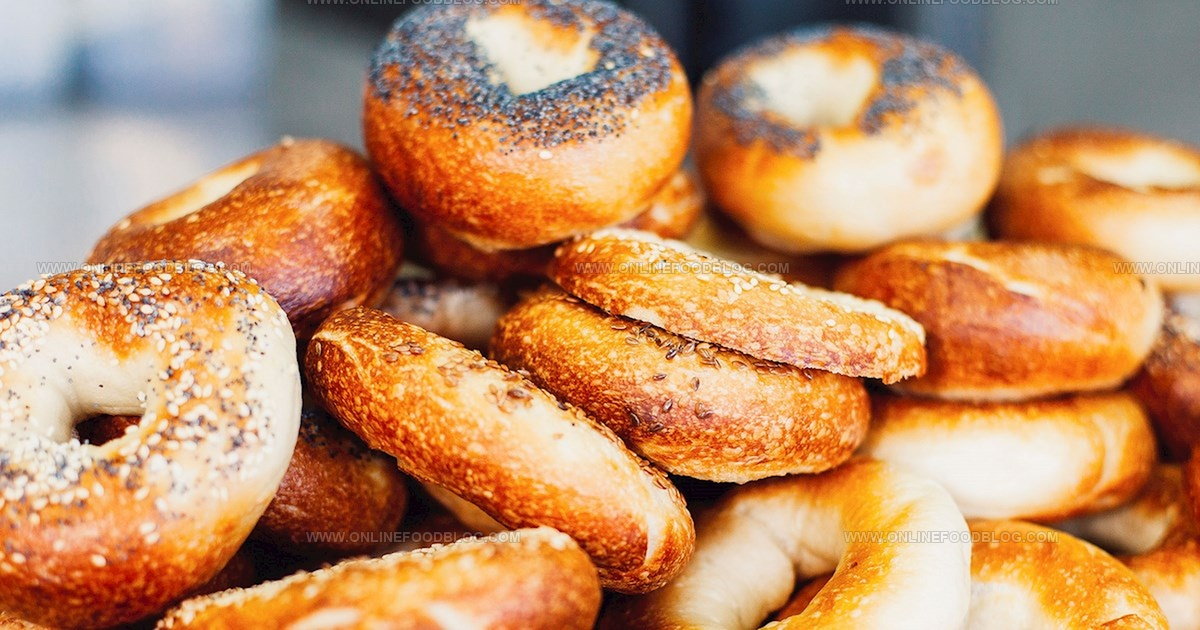
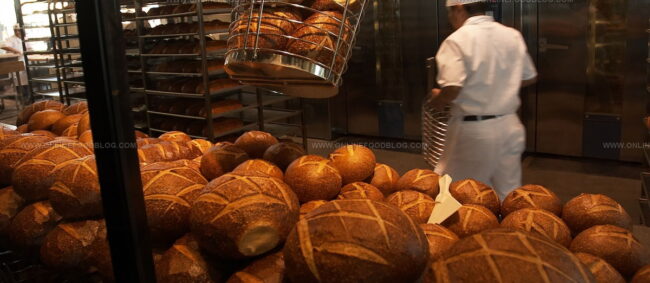
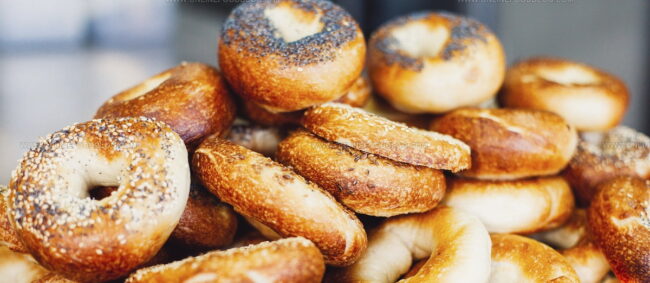
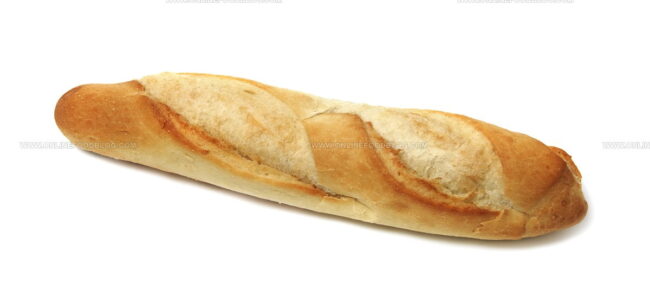
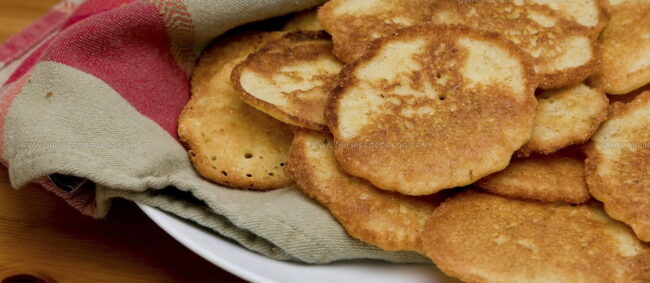
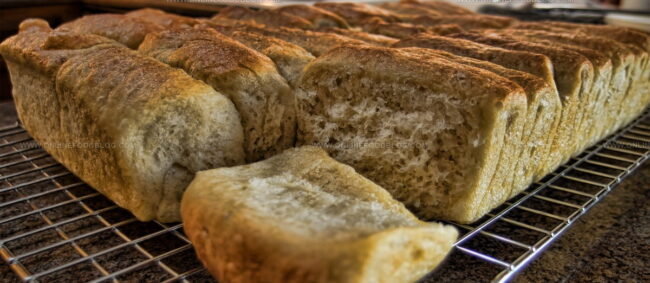
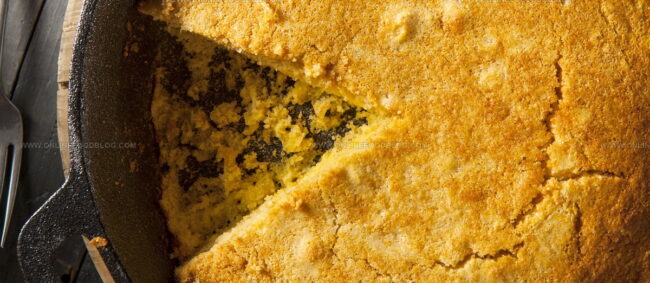
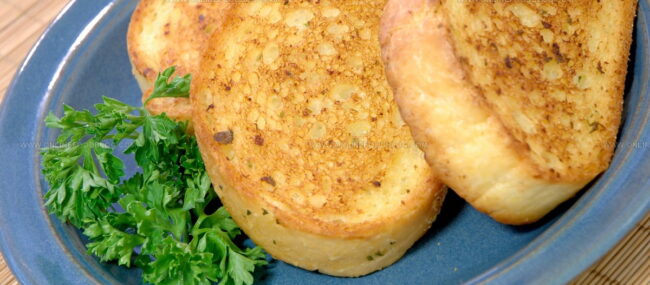
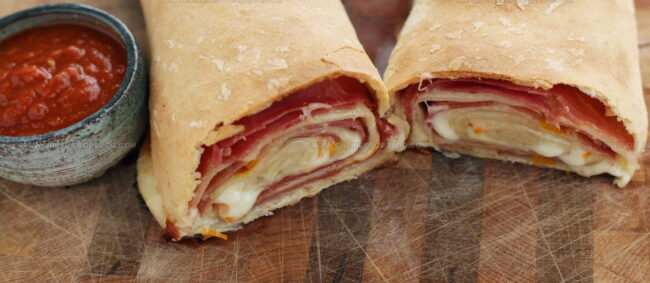
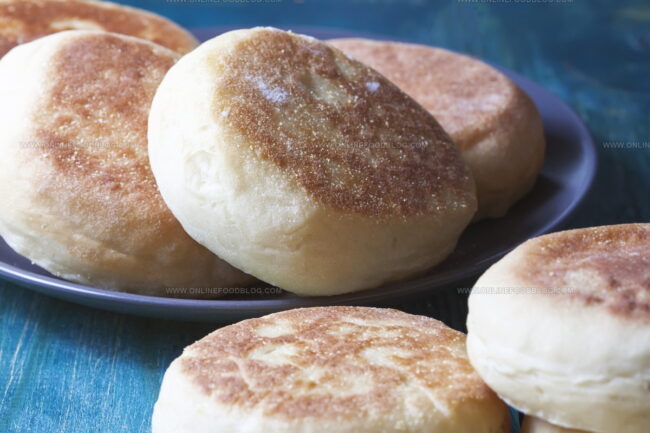
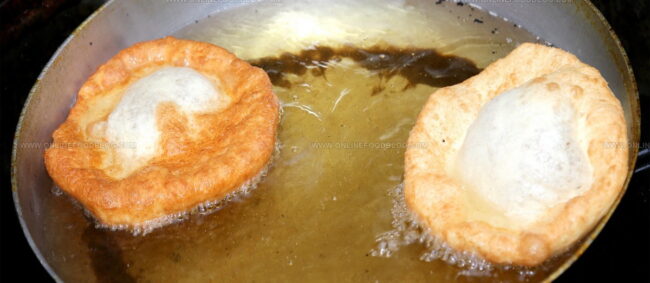
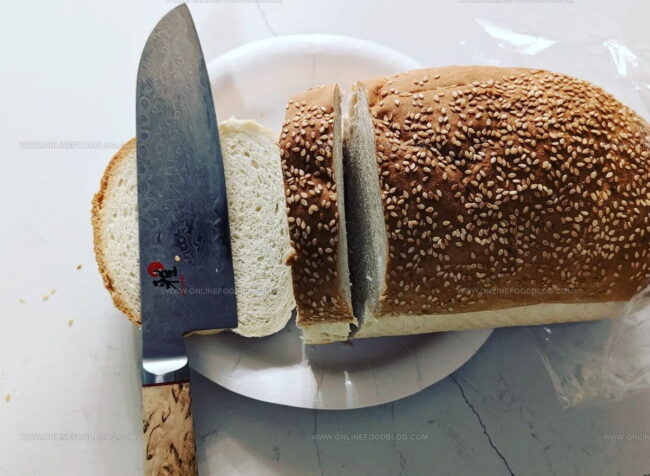
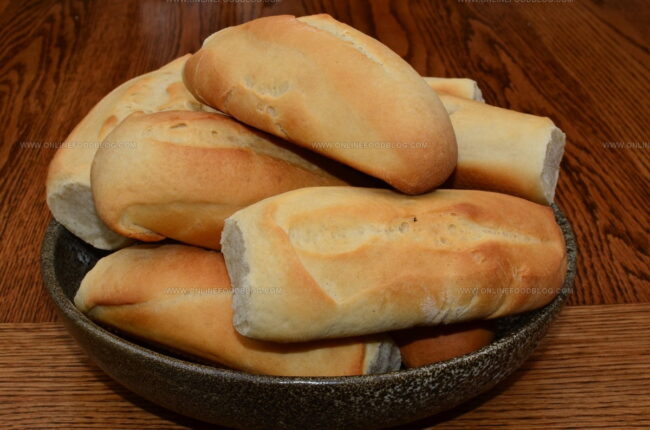
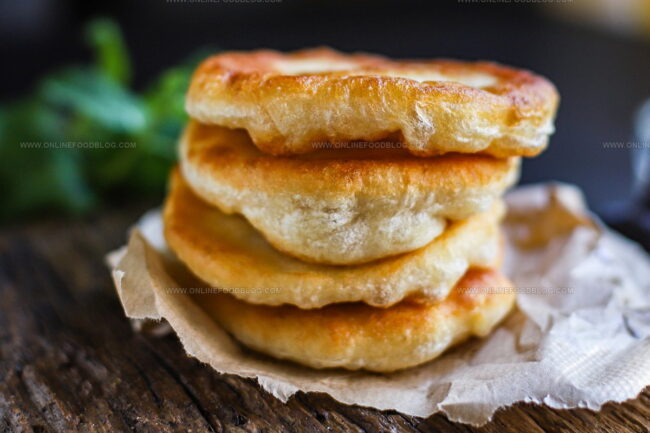
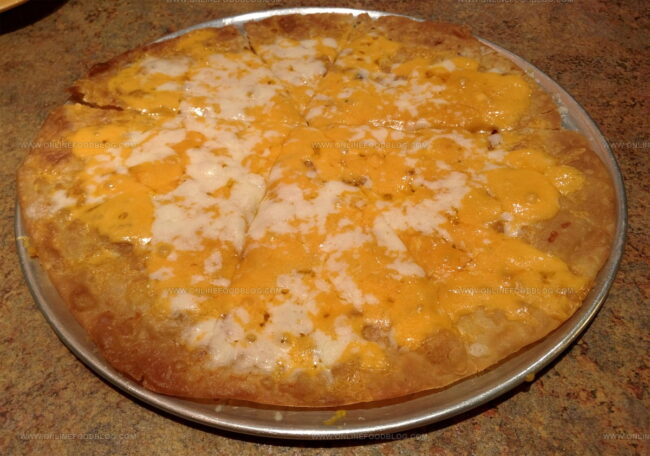
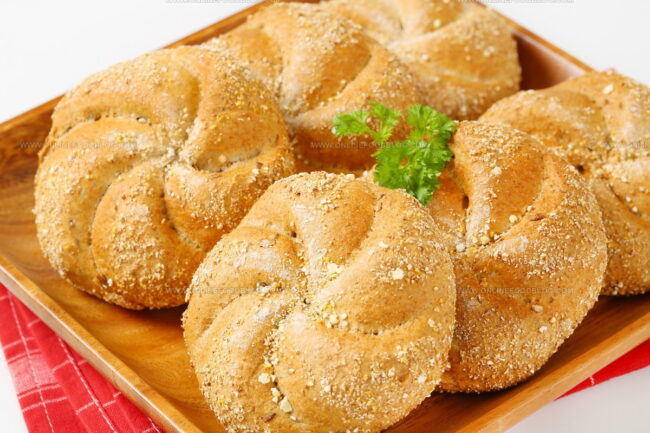
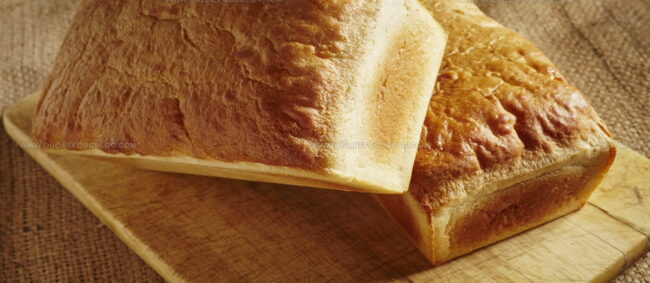
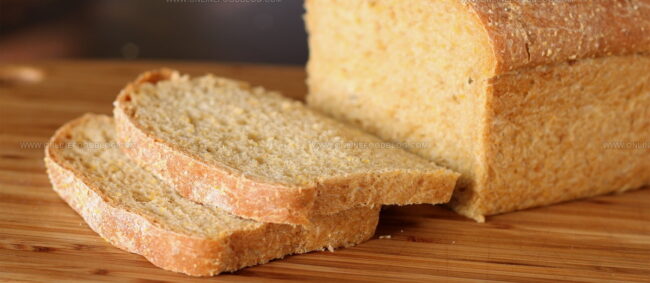
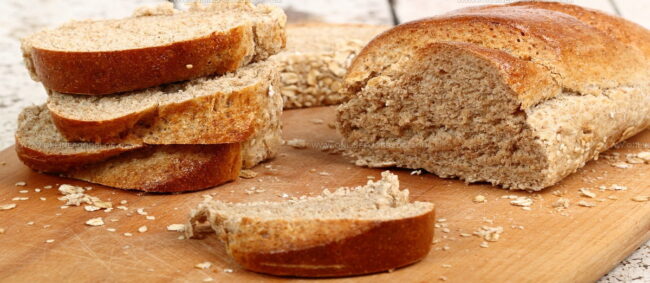
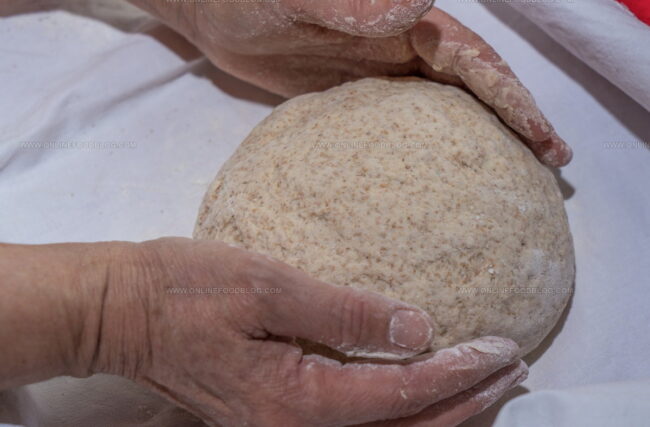
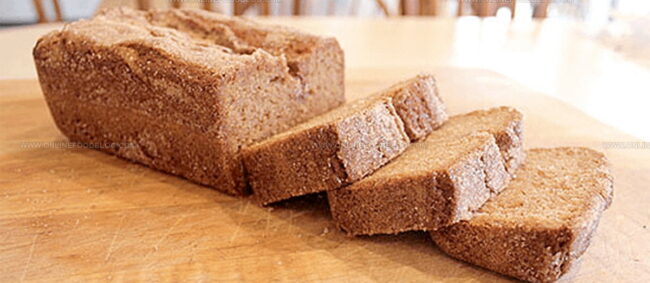
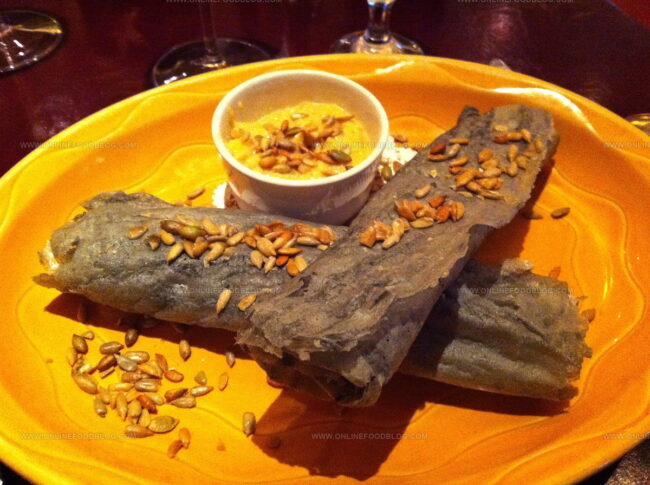
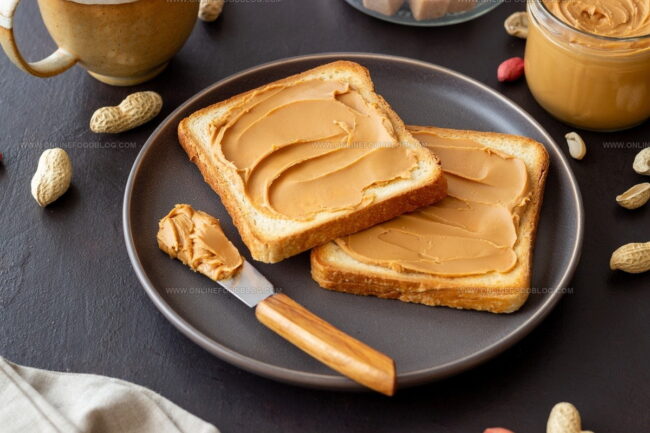
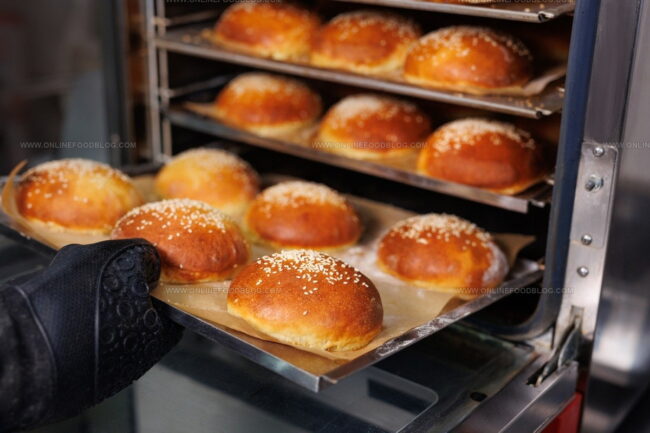
Lucas Bennett
Founder & Recipe Creator
Expertise
Simple Everyday Recipes, Sustainable Cooking Practices, Creative Meal Planning, Recipe Testing and Improvement
Education
Fox Valley Technical College, Appleton, Wisconsin
Lake Superior College, Duluth, Minnesota
Lucas Bennett’s cooking journey started in his parents’ kitchen, where he learned to prepare tasty, no-fuss meals from scratch. His culinary passion led him to Fox Valley Technical College, where he gained practical cooking skills.
He then expanded his focus on sustainability at Lake Superior College. Today, Lucas shares easy, approachable recipes designed to make cooking enjoyable and stress-free for everyone.